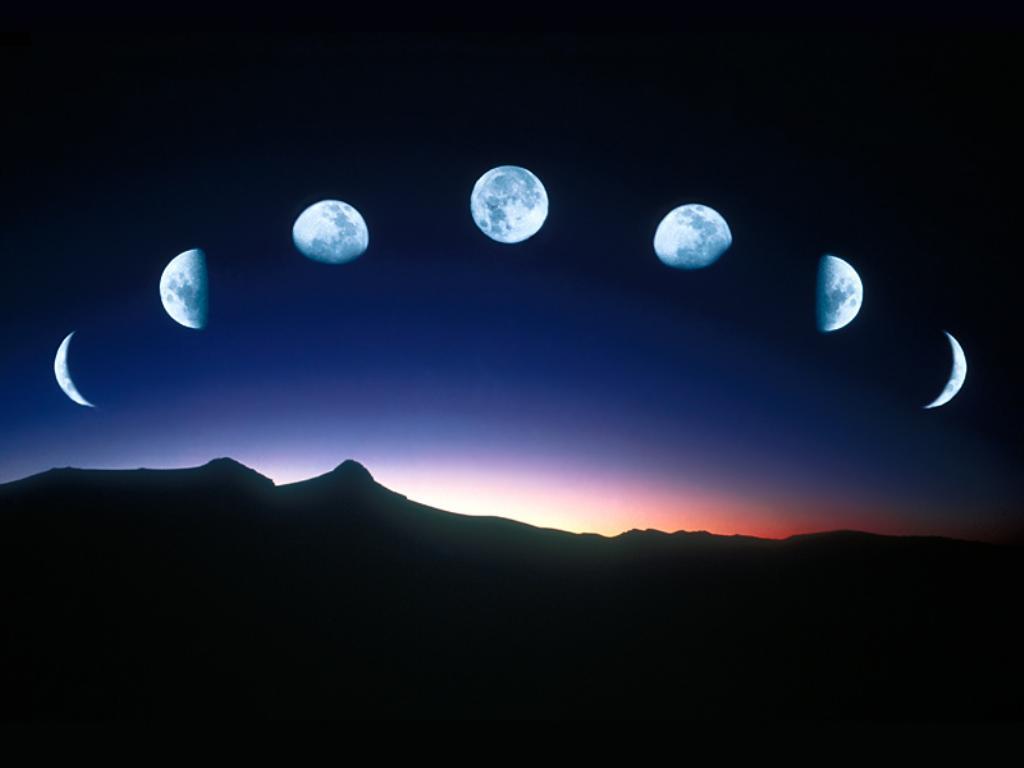
What would happen if the moon simply blinked out of existence?
The first natural phenomenon that would give out is the tides. The ocean’s tides, as we currently experience them, are the result of the gravitational force between the earth and the moon, combined with the way the earth and the moon move in relation to each other. The sudden disappearance of the moon would completely upend that system. There would still be some movement. Waves would still break on the west sides of continents, due to the rotation of the earth.
Or at least they would at first, since the motion of the earth would become unpredictable. Once the moon kicked out the earth would precess like a top which has spun down enough to wobble, but not topple over. This would be a heck of a wobble.
The earth would move so radically that it could sometimes spin perpendicular to the plane of its orbit. In other words, the southern or northern hemisphere would be exposed to the sun at all times, while the other hemisphere would be perpetually dark. At other times, it would spin exactly parallel to the plane of orbit, eliminating the seasons by making all days equally long.
The world-killing precession would take a long time to murder the last of the human race, but in the meantime we’d be entertained by ordinary disasters. The moon exerts gravitational stress on the earth as well as the sea, and some consider it a factor in continental drift. As a result, we might see an uptick in volcano and earthquake activity.
Meanwhile, any plants and animals which had their reproduction or migration scheduled tied to the lunar cycle would be completely scrambled. The collapse of fish, bird, and insect populations would put a strain and local ecology and result in starvation and social disintegration.
It would also be harder to see at night.
How could the spin of the earth be so important? For centuries we didn’t think it was spinning at all.
What exactly would happen depends on how quickly the earth stops spinning. If it stops spinning in a moment, everything not directly attached to it would fly off to the east. (Anything that was attached would probably get broken in two.) Survival would depend on how close you were to a pole (Since at the equator you’d be tossed eastward at 1000 mph, a speed that would lessen towards the poles), and whether you worked in, or near, a pillow testing facility.
If the earth slowed down over a few weeks, more people would survive the initial loss of momentum. Their best bet would be to calculate exactly what position the earth would stop in, and hightail it to the border between the light and the dark side of the world. The end of the earth’s rotation would mean the end of day and night. Half the world would constantly be facing the sun while the other side would be in perpetual darkness.
One minor, but interesting, effect of the end of the earth’s rotation, is that everyone and everything on earth will gain a little weight. The spin of the earth causes us to undergo a centrifugal force – a constant push outwards similar to what you feel when a car you are sitting in makes a sharp turn. This outward force lessens our ‘weight’ by around five ounces per hundred pounds. If we didn’t get tossed through the air, we’d find ourselves more stuck to the earth than ever.
This centrifugal effect is felt most at the equator. And it isn’t just felt by human beings. It’s also felt by water. Because centrifugal force counteracts gravitational force, water is stacked higher at the equator. There is a bulge of water at earth’s midsection that, if the earth stopped spinning, would fall back into place, and flow towards the poles. Provided it didn’t freeze, and fast, it would flood the northern and southernmost parts of the world, while uncovering land near the equator.
So if you want a chance to survive, head to the middle of the world.

This depends on how dramatically the orbit changed. The habitable zone of our solar system lies between 88 million miles and 127 million miles from the sun. Since we’re 93 million miles away right now, it’s clear that we want to go out, rather than in, if the choice is presented to us.
It doesn’t seem hard not to go five million miles off course, but of all the impossible disasters, this is the most possible. It seems that past mass extinctions have been linked to climate changes due to variations in earth’s orbit. Lower temperatures and massively different rainfall patterns lead to vegetation and habitat changes that killed off mammals, from large species down to rodents. That doesn’t have to be a world-ender. Humans are a resourceful bunch.
And this particular change offers some hope as well as fear. The earth’s motion is not as stable as we imagine. Over the earth’s history, it alternately describes an ellipse or a circle around the sun. Its tilt varies between 22.1 and 24.5 degrees. It also precesses, although much more slightly than it would if it lost the moon.
Around 23 million years ago, the earth was describing a circular rotation around the sun, and had only minor tilt. The results, scientists say, were mild seasons, few temperature extremes, and a reforming ice sheet over Antarctica that may have reversed global warming.
Such encouraging news is being taken seriously by astronomers. Some want to use the gravitational pull of asteroids to haul the Earth to a better orbit. It could solve all our climate change problems! There’s only one catch.
We could lose the moon.
by David Livingstone


